As we do every year, pandemic permitting, the staff at Tech Advisor descended on Barcelona with thousands more from the global tech community for 2023’s Mobile World Congress trade show.
MWC usually serves up a plethora of new smartphones but there’s plenty more to see from the biggest technology companies, from laptops to wearables, tablets to satellites (see the Motorola Defy, below).
Though Samsung launched its Galaxy S23 series before the show this year there have been plenty of big launches from competing Android brands, announcements from others, and a whole load of new produtcs to get our heads around.
Here are the ten that stood out to us – our Best in Show Award winners for MWC 2023.
Honor Magic Vs
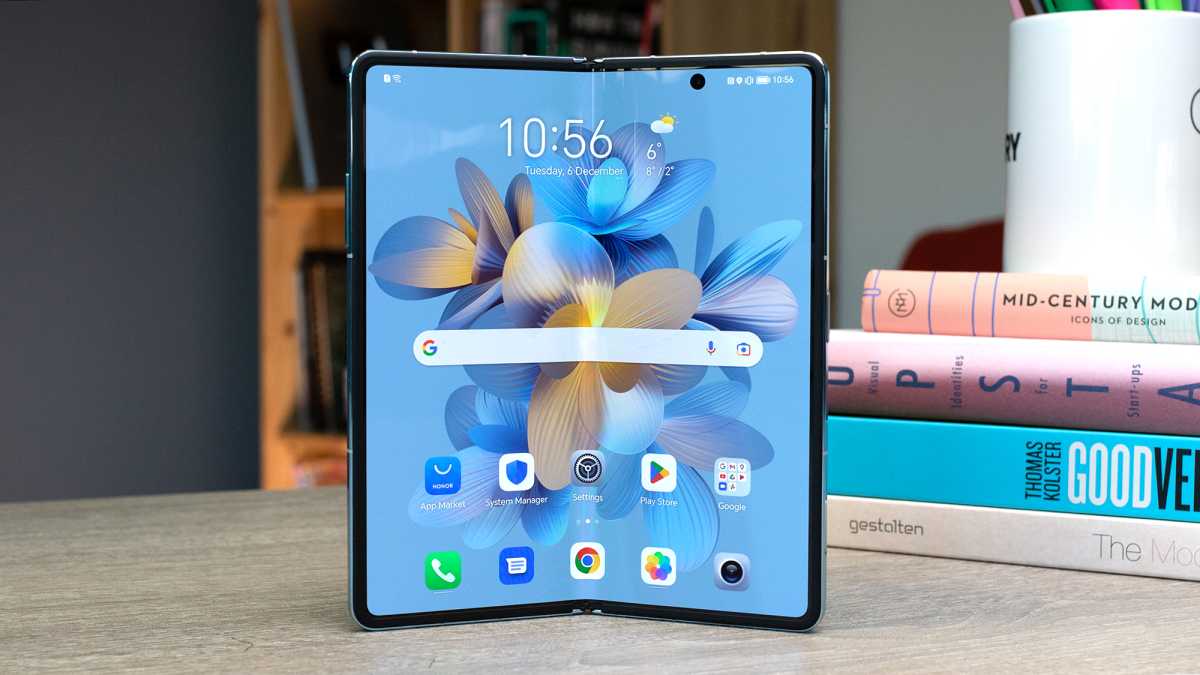
Henry Burrell / Foundry
Honor didn’t really reveal the Magic Vs at MWC this year. Its presentation focussed on the more powerful, but less exciting Magic 5 Pro. But this is when we finally found out for sure that the foldable phone will launch in the UK and Europe, and at a Samsung-beating price of €1,599 (around £1420 / $1700).
With a slim body and a hinge capable of closing all the way with no gap, there’s a physical polish here that even Samsung’s hardware lacks. It’s backed up by an impressive triple rear camera and the punchy Snapdragon 8+ Gen 1 chipset, so it’s no slouch when it comes to performance either.
We still reckon Samsung’s slick software gives the Z Fold 4 a slight edge over Honor’s hardware, but this is close competition – and the Korean company’s first real rival in the worldwide market.
Motorola ‘Rizr’ rollable concept phone
Before you get excited, no, you can’t buy the Rizr. That isn’t even technically its name, as Motorola reps were at pains to point out: this is an unnamed concept device, but proof that rollables are still on the way and chasing after the foldable phone market (and laptop, with a Lenovo rollable laptop on show at the same time)
Named after the company’s noughties line of slider phones, the Rizr’s squat, 5in display can extend upwards to a full 6.5in screen in a more traditional form. You can trigger that manually, but it’ll also kick in automatically when you open the keyboard or watch a video in landscape.
What’s won us over is how well Motorola has thought this through from every angle – literally. When rolled down the extra screen wraps around the rear to serve as an always-on display or camera viewfinder, and it can actually roll inwards even further to reveal the phone’s hidden selfie camera and earpiece.
Xiaomi 13 Pro

Dominik Tomaszewski / Foundry
The Xiaomi 13 Pro is the company’s top-of-the-line flagship for 2023 – at least until the rumoured 13 Ultra potentially arrives later this year.
It’s a total knockout from a hardware perspective, with stellar Snapdragon 8 Gen 2 performance, a stunning 120Hz display and much-improved battery life among the highlights. You’ll have to contend with a hefty camera bump, but the triple 50Mp rear sensors are superb and the 32Mp selfie camera isn’t bad either.
The IP68 dust- and water resistance rating is back after a one-year absence too, joined by an attractive new ceramic back.
Aside from the high price tag (from £1,099/€1,299 – around $1320), the only thing holding it back is software. MIUI is far from the best or most intuitive interpretation of Android, although it’s still very usable and offers a wide array of features.
If that’s not a dealbreaker for you, the Xiaomi 13 Pro’s stellar hardware means it can rival the best flagship phones around. But you may also want to consider the cheaper regular 13.
Lenovo ThinkPad Z13 Gen 2
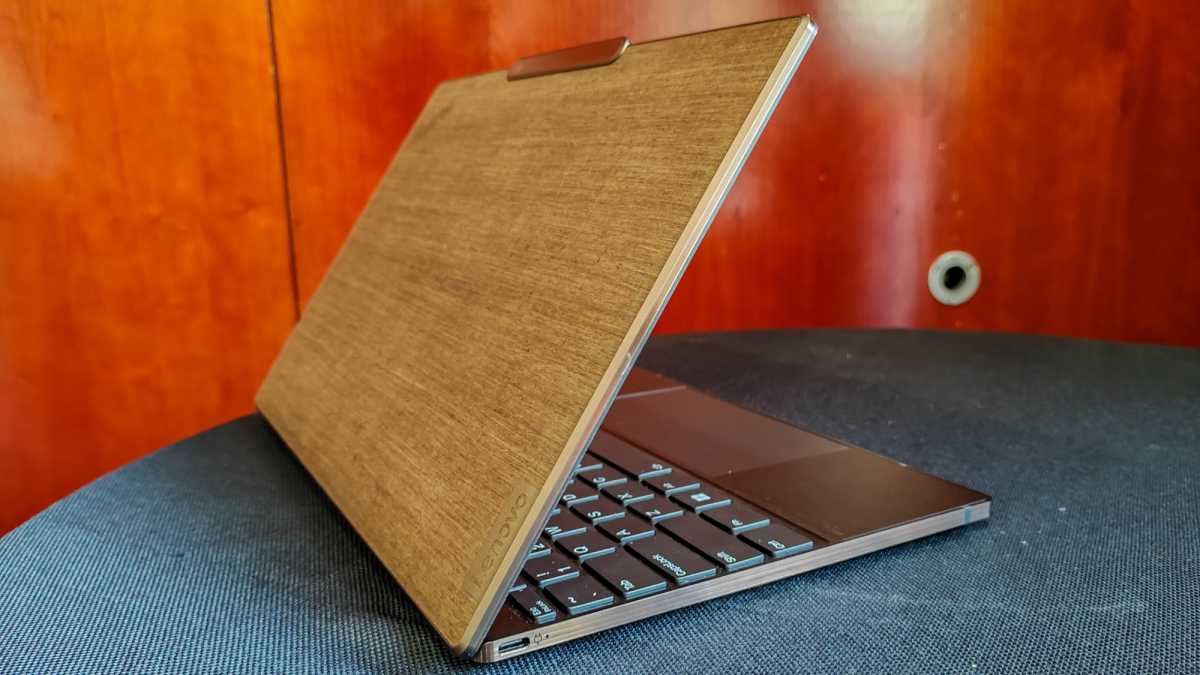
Dominic Preston / Foundry
In a world where so many laptops look identical, the Lenovo ThinkPad Z13 truly stands out. Alongside the usual silver aluminium finish, there’s also the option for a unique coating made from flax fibre – a fabric made from the stems of a flax seed plant.
It’s considered an environmentally friendly alternative to plastic or metal, albeit not in its current form on the Z13. There’s still a metal lid below the flax fibre right now, but it’s hoped that more of the chassis can transition to it in the future.
So, as it currently stands, the ThinkPad Z13 is a powerful laptop that looks cool, and it’s hard to stand out in the Windows laptop market these days. AMD’s latest Ryzen 7000 CPUs power a 13in display (IPS or OLED), while you get up to 2TB of SSD storage and a Full HD webcam.
There’s an option for 4G, too, although you’ll pay more for those models than the expected starting price of around €1,800 excluding VAT (around £1600 exc VAT / $1920), according to Lenovo.
Tecno Phantom V Fold
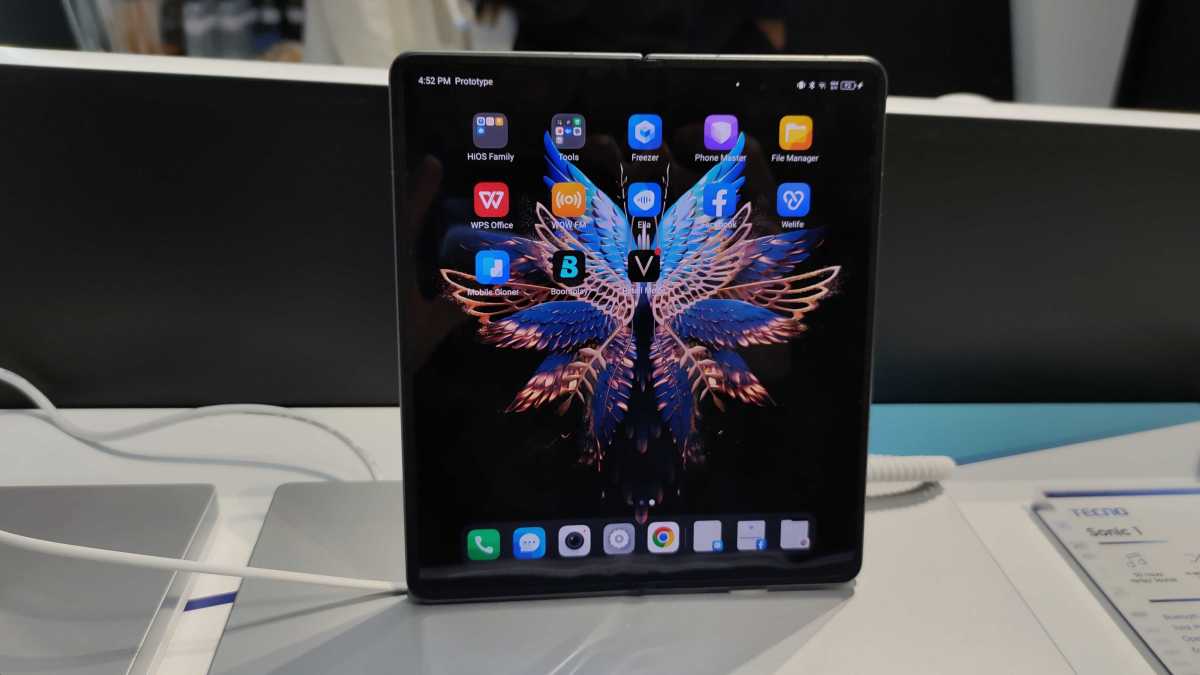
Anyron Copeman / Foundry
The Tecno Phantom V Fold is the firm’s first ever folding phone. It’s not coming to Europe or North America, but we wish it was.
Not only does this book-style foldable significantly undercut rivals on price (from $1,099 – around £915), it also has a crease down the middle that actually lives up to the “almost invisible” claims.
You can still just about see it, but it doesn’t get in the way of the excellent 7.85in, 2K internal display. The 6.42in cover screen is almost as good (both are adaptive 120Hz), and means you can easily take selfies with the triple rear cameras.
Each of the 50Mp main, 50Mp 2x telephoto and 13Mp ultrawide perform well in bright environments, but it’s low light where Tecno puts much of its focus. That includes dedicated night modes for portrait shots and 4K video.
MediaTek’s flagship Dimensity 9000+ chipset means performance is excellent, while Tecno’s Android skin includes plenty of software features designed for foldables.
It might not be available where you’re based (just India initially), but don’t sleep on the Phantom V Fold.
Motorola Defy Satellite Link
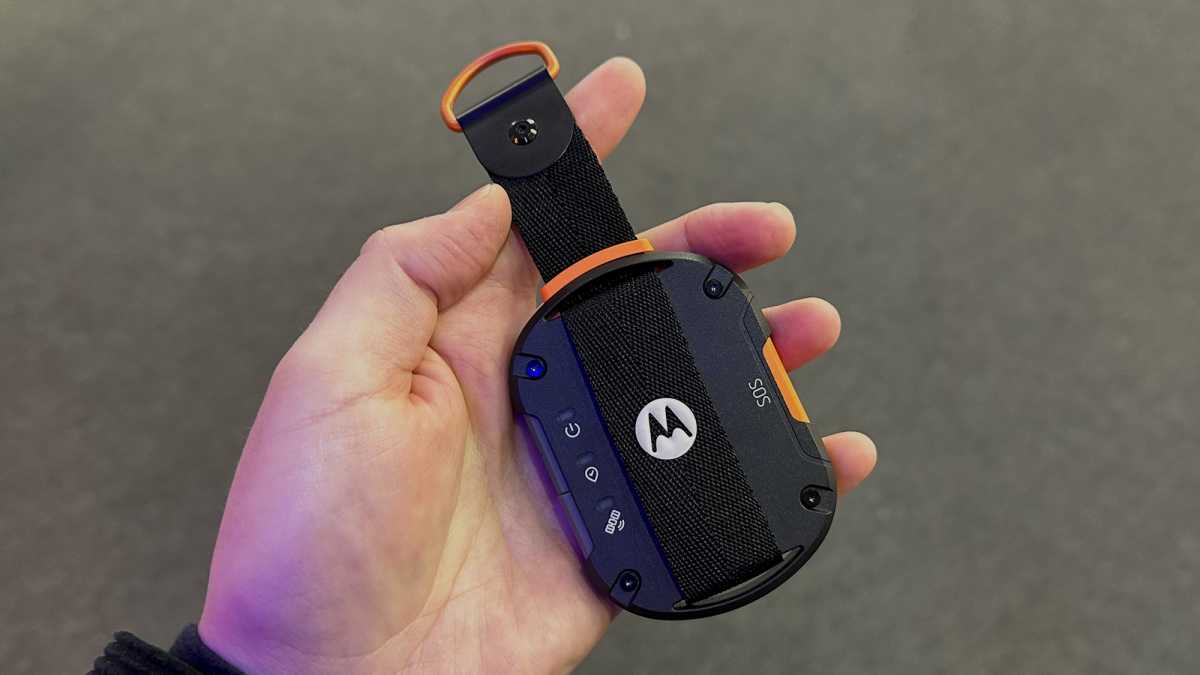
Henry Burrell / Foundry
This little dongle is both low key and a big deal. While Qualcomm was at MWC to promote its budding Snapdragon Satellite tech, the UK’s Bullitt Group was there demoing its own similar smarts in this Motorola-branded Bluetooth accessory.
The Motorola Defy can connect to any iPhone or Android phone and, with the Bullitt messaging app, allow you to send and receive SMS when you are out of cellular signal anywhere in the world.
It costs just $99 (around £83) and access to the service costs from $4.99 per month (around £4). It’s perfectly legal, and will be available to buy later this year.
Apple’s iPhone 14 has an emergency satellite messaging feature, but it’s currently limited to a few countries. Qualcomm’s satellite tech may end up being integrated into flagship phones by the end of the year, and Bullitt Group also built the CAT S75 smartphone which has the satellite link tech built in – no need for the Defy.
But the existence of the Motorola Defy as an affordable satellite accessory to message friends, family, and emergency services feels like a quiet revelation.
Xiaomi Wireless AR Glass Discovery Edition
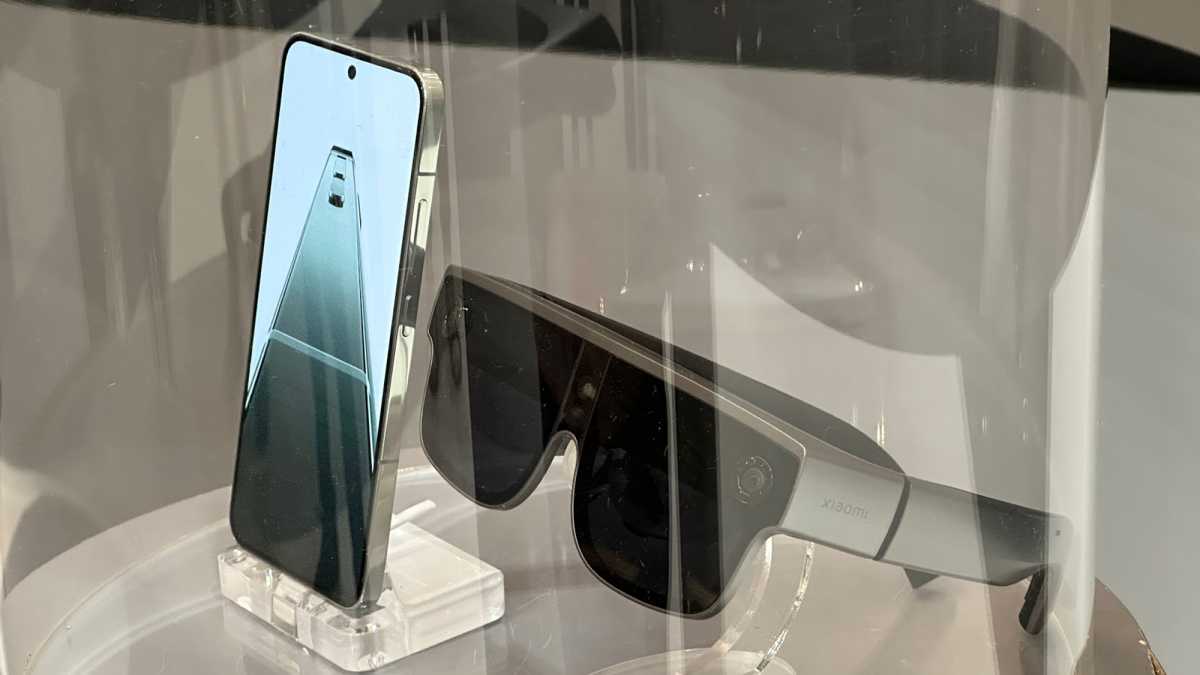
Henry Burrell / Foundry
Xiaomi wouldn’t allow many journalists access to its new impressive but clunkily-named Xiaomi Wireless AR Glass Discovery Edition, but we’ve seen enough about it at MWC to fling an award in its direction.
Tech firms have bigged-up augmented reality (AR) for several years now. The idea (as seen in so many sci-fi movies) is you can wear glasses that allow you to see what’s in front of you but also display things such as messages, map overlays, or a 3D model of your next sofa to see how it fits with your living room’s look.
With Xiaomi the clue is in the name. These are wireless AR glasses, cutting the cord often connected to a PC or similar power source with many wearable glasses. These are compatible with Qualcomm’s Snapdragon Spaces AR platform that officially works with the OnePlus 11 and is coming to other top end Android smartphones.
We saw a demo of the glasses in action with a woman very engrossed in a Space Invaders-style game. It wasn’t console level, but we can see how the applications are finally being developed, with an ecosystem partners such as Qualcomm and app developers combining to make AR products a reality rather than a concept. It also helps the Xiaomi design here is relatively sleek and at least try to look like sunglasses – this ain’t Google Glass.
The lenses have electrochromic color change pass-through that lets them change opacity, so you can fully view the world around you or block it out depending on the app.
Mainstream AR isn’t quite here yet but more than any other AR glasses, the Xiaomi Wireless AR Glass prove it’s on the horizon.
Realme GT 3
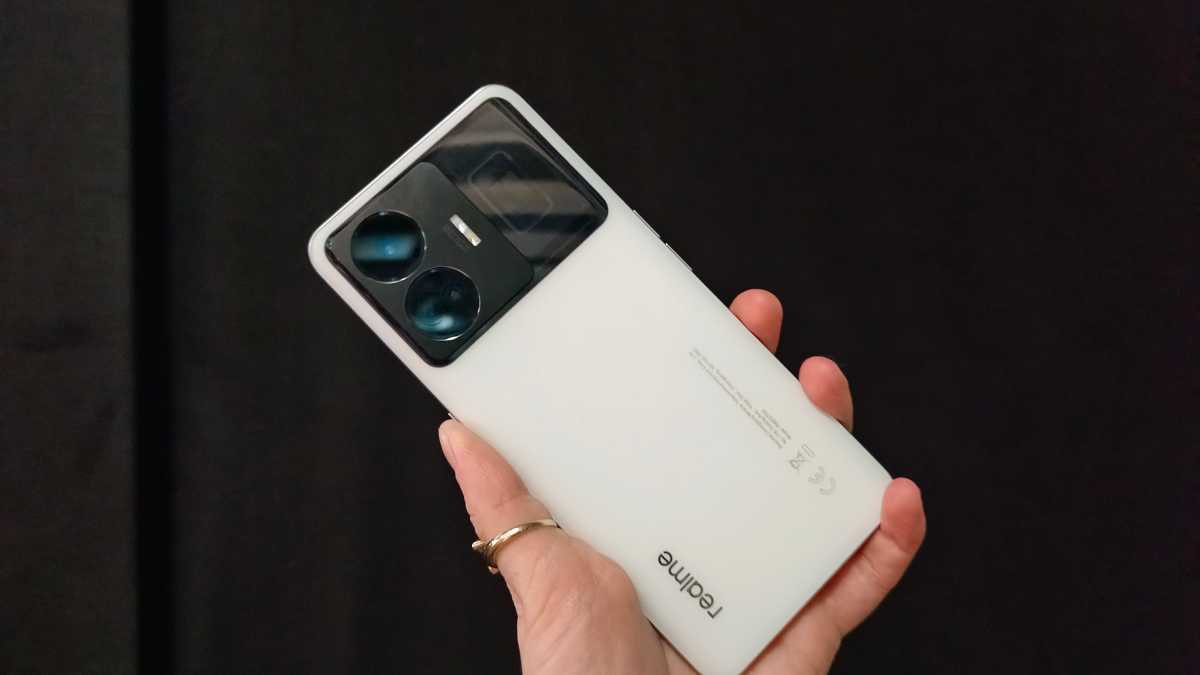
Hannah Cowton / Foundry
Ridiculously fast charging has remained the preserve of concept phones, until now. The Realme GT 3 goes on sale in either May or June this year, and has crazy-fast 240W charging, which can fill the battery from flat to full in under 10 minutes.
The phone is essentially a global rebrand of the Chinese-exclusive Realme GT Neo 5, which launched just a few weeks prior to MWC.
We do have some concerns about the long-term battery life of a phone that charges this quick – heat stress on batteries is the big one – but Realme has confirmed that the phone has a vapor cooling system and claims that it should last 1600 charging cycles whilst retaining more than 80% of the original battery capacity.
The GT3 also has an RGB-lit rectangle that lights up different colours for various notifications, which is a nice touch for the overall design. It also sports a Snapdragon 8+ Gen 1 processor and an OLED display with a 144Hz refresh rate, which for $649 is an impressive spec.
Nokia G22
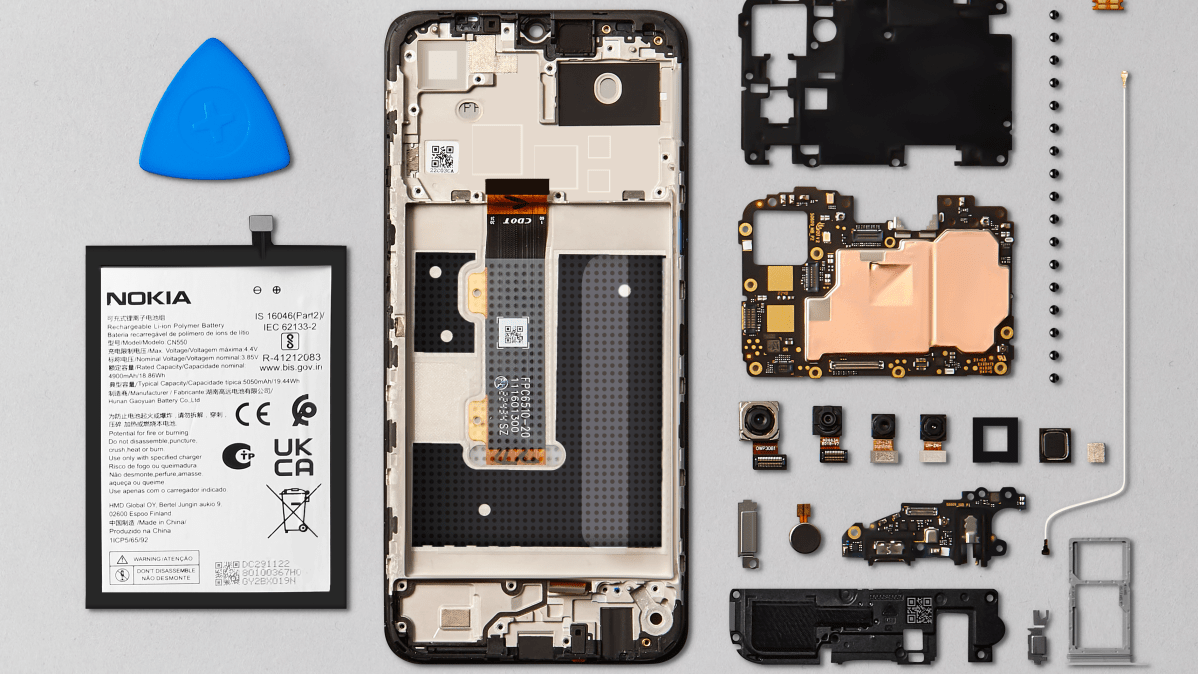
Nokia
Nokia launched three budget phones during MWC, but the Nokia G22 was the star of the show. It is designed for DIY repairs and allows you to replace the battery, display and other parts, should they have any faults.
HMD, the company that licenses the Nokia brand for phones, has achieved this by making alterations to the design for quicker and simpler access. For example, it replaced the glue on the back with plastic grips to allow users to take it off and on again without issues and included easy-to-access screws for replacing delicate parts.
In a briefing, a Nokia spokesperson replaced the battery in under five minutes and told Tech Advisor that a display change would take just 20 minutes. Customers can save money by not having to hire someone, and ultimately save their pockets (and the planet) by holding onto devices for longer.
It’s true that Fairphone did this first, but having another phone manufacturer on board with at-home repairing is great to see. It reaffirms Nokia’s commitment to being conscious of the environment with its products and services, which is a breath of fresh air in a world of constant phone releases.
OnePlus Pad
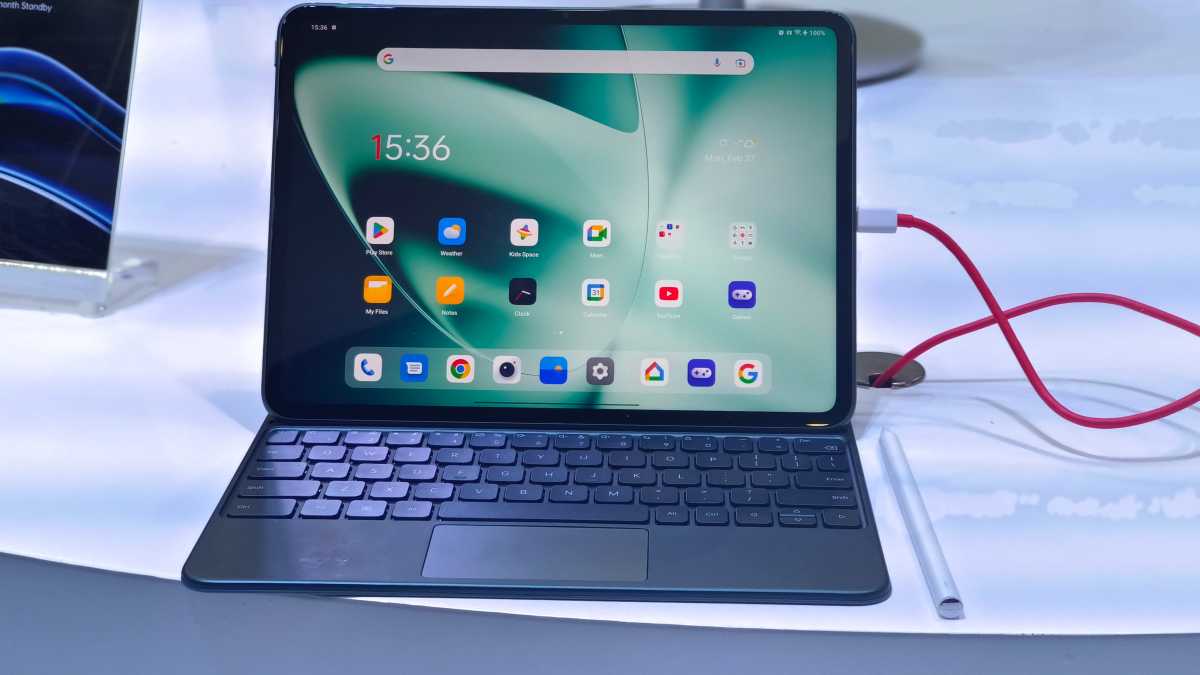
Hannah Cowton / Foundry
The OnePlus Pad looks like it will be a relatively premium device that has the potential to be a worthy rival to the iPad Air.
Coming in a stunning ‘Halo Green’ aluminium alloy finish, the tablet is lightweight and slim despite a big and bright 11.6in display with a 144Hz refresh rate and support for Dolby Vision. This is paired with punchy quad speakers with Dolby Atmos support.
It has 67W fast-charging to top up its generous 9510mAh battery which should yield 12.4 hours of continuous video playback. OnePlus also demoed a matching stylus and keyboard, which both had the same high-end feel, those these will be optional extras.
Pre-orders for the OnePlus Pad begin this April. Whilst no price has been announced, the brand is known for offering a lot of bang for the buck with its smartphones, so we’re hoping to see a similar trend with the tablet.


